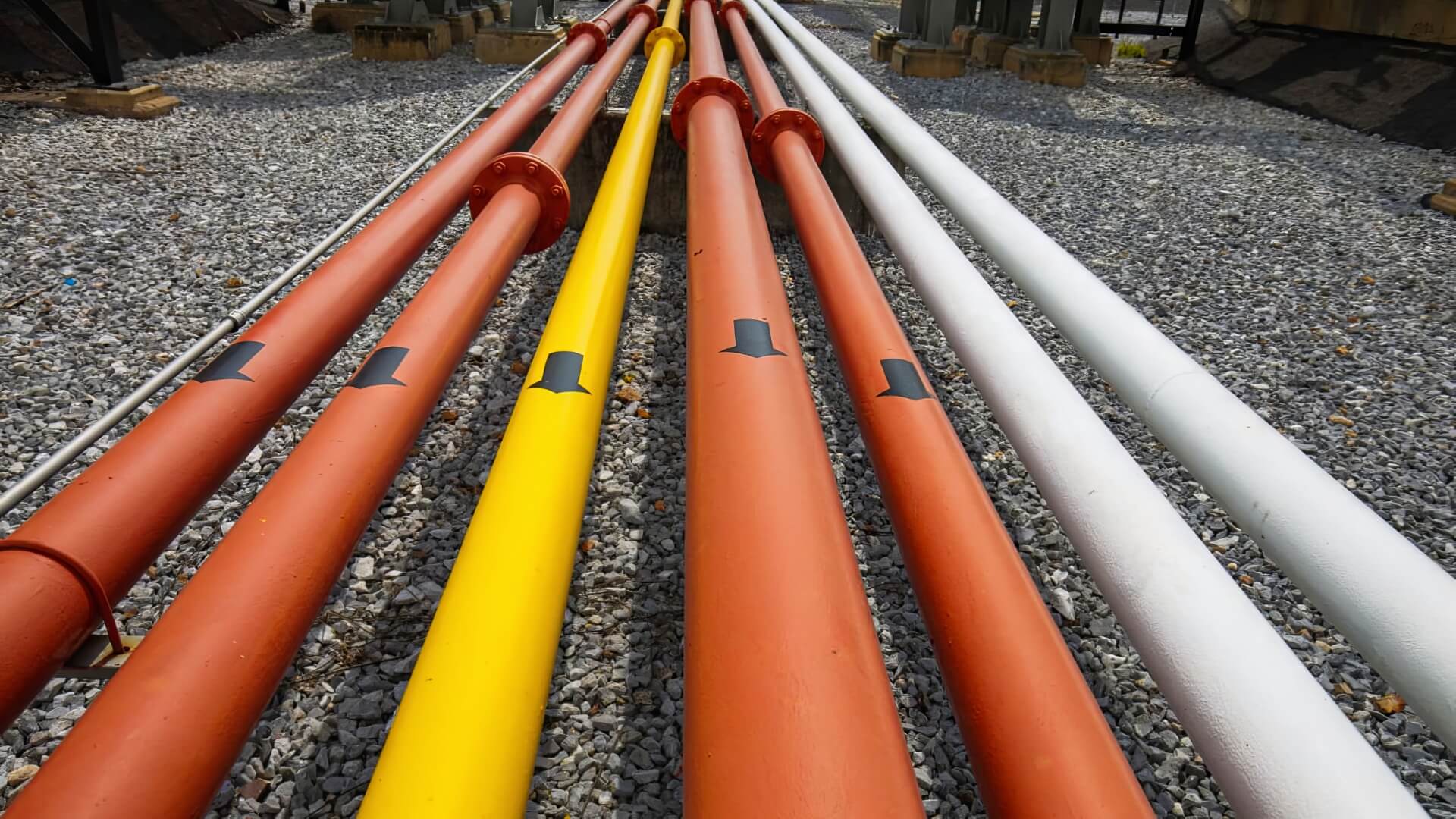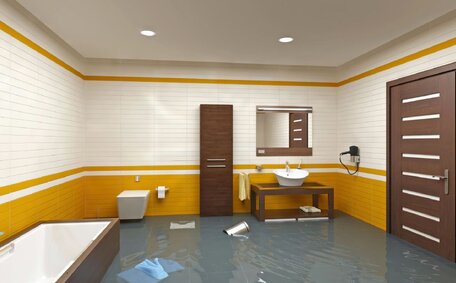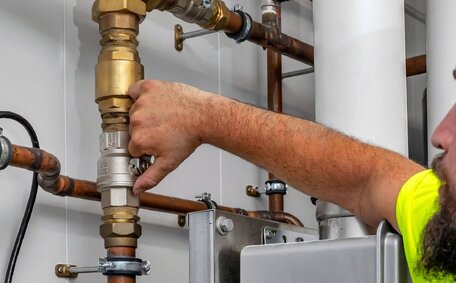What is epoxy resin and how is it used in pipe relining?
Epoxy resin is a blend of an epoxy base and a hardener, creating a robust material ideal for pipeline protection when mixed. These components chemically react to create a sturdy, enduring material suited for pipeline protection.
Pipe relining involves coating the interiors of damaged pipes with a layer of epoxy resin. At Moorebank Plumbing, we use high-quality epoxy resins designed specifically for restoring old pipes. As the epoxy cures and hardens, it forms a smooth, protective barrier inside the pipe.
The resin coats the pipe walls, sealing cracks and gaps.
We prefer pipe relining with epoxy over traditional pipe replacement because it is less invasive and more cost-effective than traditional methods. With proper maintenance, epoxy materials can sustain pipe systems for over 50 years, promising long-term functionality. The process restores your pipe integrity and water flow without digging trenches or cutting infrastructure.
The durability of epoxy resin is consistent across applications, ensuring lasting performance in underground water pipe linings. Properly installed epoxy lining helps ensure a safe, reliable system for years before pipe replacements become necessary.
Typical lifespan of epoxy resin linings
Typically, high-quality epoxy resin used in pipe relining can last 30 to 50 years, provided it’s correctly installed and maintained.
Compared to other pipe restoration methods like patching or sliplining, epoxy resin linings tend to last significantly longer when correctly applied. Properly cured and bonded epoxy has been independently tested to withstand decades of uninterrupted liquid exposure within pipes.
Nevertheless, the actual functional lifespan of epoxy resin is influenced by various factors. These include the specific epoxy chemistry, cure method, pipe environment, flow rates and temperatures, and maintenance practises over time.
Factors impacting the lifespan of epoxy resin
Several key factors can shorten or extend the lifespan of epoxy resin used for pipe relining:
Temperature Changes
Extreme or fluctuating temperatures can hasten the degradation of epoxy materials. Heat accelerates the curing process, whereas cold can retard it. Frequent heating and cooling cycles weaken chemical bonds over time.
To achieve effective curing, installation should occur when ambient temperatures are between 16°C and 35°C. Ongoing exposure above 50°C drastically shortens an epoxy lining’s lifespan.
Environmental Factors
Moisture infiltration, changes in soil pH levels, ground movement, and chemical contamination from industrial processes all negatively impact epoxy pipe linings over time.
For commercial clients, industrial effluents containing acids, solvents, or petroleum distillates can degrade epoxy faster than expected.
Pipe Condition
The substrate condition strongly influences epoxy bonding and durability. Corrosion damage, mineral build-up, cracks, and loose joints undermine long-term integrity. Proper surface preparation and repair enhances adhesion.
Flow Rates and Pressures
Higher flow velocities and system pressures add physical stresses on the epoxy barrier. Gradually, this mechanical force causes thinning and weak points prone to failure.
To preserve the linings, it’s critical to monitor system conditions and regulate pressure levels.
Testing effectiveness of aged epoxy resin
Regular testing of aged epoxy resin ascertains its continued suitability for pipe relining. As epoxy ages, the chemical components can degrade, negatively impacting curing times, bonding strength, and durability.
When to Test Epoxy Resin
It’s advisable to perform tests on stored epoxy resin approximately every six to twelve months. Furthermore, evaluate the resin’s suitability when it has been stored in improperly sealed containers, subjected to temperature fluctuations, or is beyond the manufacturer’s expiration date.
Pot Life Testing Procedure
Conducting a pot life test can effectively gauge the viability of epoxy resin:
- Prepare a small mixing container and stir stick.
- Measure equal resin and hardener amounts according to package directions.
- Mix thoroughly for 3-5 minutes, scraping container walls to incorporate all product.
- After mixing, allow the resin to sit undisturbed and note the time.
- Periodically examine the mixture for signs of curing, such as increasing firmness, glossiness, and temperature.
- Record the time it takes for the resin to gel and become unworkable, and then compare it to the product’s specified pot life.
If mixed resin cures significantly faster or slower than indicated, it may be unusable for quality pipe relining. Contact the manufacturer if uncertain about test outcomes.
Importance of Testing
While simple and fast, pot life evaluations provide valuable insight on epoxy suitability and prevent rework using compromised materials. Testing helps maintain safety and consistent, long-lasting repairs you can stand behind.
Relining pipes with new epoxy resin
At Moorebank Plumbing, we use a multi-step process to reline pipes with new, high-quality epoxy resin designed for potable water systems:
- Begin with a thorough cleaning of the pipe to flush out and eliminate debris.
- Use CCTV cameras to inspect the pipe walls and pinpoint faults that need repair.
- Use hydraulic cement to patch and seal any leaks or cracks.
- Scuff the pipe surface and apply a primer coat to enhance epoxy adhesion.
- Introduce a resin-infused felt tube into the pipe using inversion or pull-in techniques.
- Inflate the inverted tube until resin contacts all inner pipe walls.
- Circulate hot water to speed up the heat-cure process, lasting roughly 2 hours.
- After cooling for 24 hours, test for leaks to confirm the lining has cured evenly.
Epoxy relining offers a less invasive and more cost-effective solution than full pipe replacement, with the process typically completed within 1-2 days. The seamless epoxy barrier renews old pipes for 30-50 more years of peak performance.
As Sydney’s leading plumbing provider, we follow exacting industry standards to safely deliver robust, long-term pipe repairs. Contact our team today to evaluate your piping system!
Maintaining epoxy-lined pipes
Proper maintenance is key to maximising the lifespan of epoxy-lined pipes. While durable, the resin lining still requires care and upkeep to prevent premature breakdown.
Regular Flushing
Pipes can accumulate mineral deposits, sediment, and biofilms over time. An annual flush of epoxy-lined systems curtails buildup that may cause turbulence and friction-related deterioration.
Use only mild, non-corrosive cleaners on epoxy materials, adhering to the manufacturer’s specifications. Harsh chemicals can degrade linings faster.
Wax Coating
Every 3-5 years, apply a microcrystalline wax coating to the interior of epoxy-lined pipes. Quality waxes enhance flow while providing an extra protective barrier.
Verify that the wax used is compatible with potable water systems. Thoroughly flush pipes post-application before restoring your water supply.
Leak Checks
Inspect epoxy lined pipes annually for potential leaks indicating faults in the lining. Early leak detection allows for spotted repairs before major failures occur.
Monitor systems for pressure drops or flow changes signalling possible breaches. Check surrounding soil for moisture accumulating from underground leaks.
Avoid Freezing
Prevent pipes from freezing in cold conditions. Expanding ice puts extreme stress on epoxy linings. Insulate exposed sections prone to freezing.
Regulate Pressure
Use pressure regulating valves to maintain optimal pressures below epoxy lining maximums. Excessive pressure causes fatigue over time.
Control Flow Rates
High flow velocities erode epoxy prematurely. Size piping and components to limit excessive turbulence during peak demands. Overflow routing helps shunt and smooth flows.
Properly maintained epoxy pipe linings should provide 30-50 years of outstanding performance. Contact Moorebank Plumbing to inspect and service your vital piping systems.






